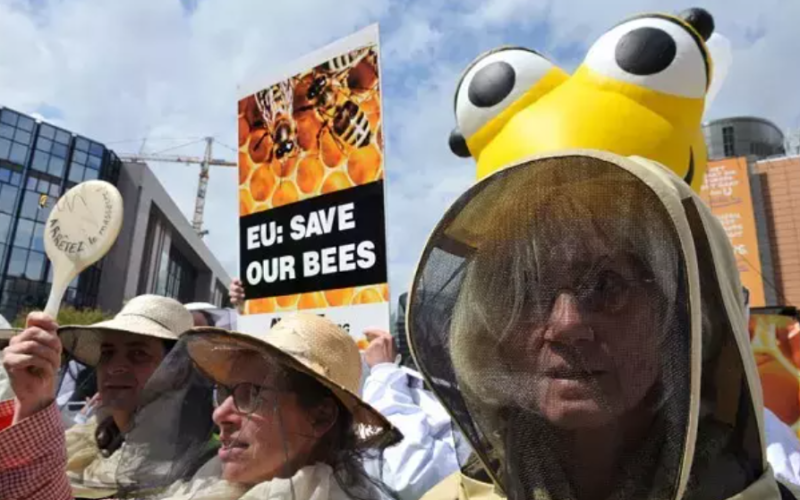A recent study has revealed alarming levels of neonicotinoid pesticides, known for their harmful effects on bees, in English rivers. This discovery comes despite the European Union’s ban on these chemicals due to their devastating impact on pollinators.
The study, conducted by environmental scientists, found that over half of the samples taken from rivers in England exceeded recommended safety limits for neonicotinoids. These pesticides can leach into water bodies, posing a threat to aquatic life and potentially entering the food chain.
Neonicotinoids, or neonics, are harmful for the same reason they are initially used—when it comes to insects, they rank among the deadliest pesticides ever formulated. The issue lies in their indiscriminate nature, causing the demise of not only “pest” insects but also numerous butterflies, bees, and other forms of wildlife. Since their introduction, neonics have amplified the detrimental impact of U.S. agriculture on insect populations by nearly 50 times.
Neonics are classified as “systemic” pesticides. This signifies that they can be directly applied to the soil (as a “drench”) near a plant’s roots, or as a coating on a plant seed, which the growing plant then absorbs. This renders the entire plant—including its nectar, pollen, leaves, stems, and fruit—hazardous. What exacerbates the situation is that only a small fraction of the neonics actually reach the intended plant, roughly 2 to 5 percent in the case of most seed coatings, leaving about 95 percent remaining in the soil.
The persistence of these bee-harming chemicals in the environment raises concerns about the long-term impact on pollinator populations and ecosystems. It also highlights the need for stricter enforcement of pesticide regulations to safeguard biodiversity.








